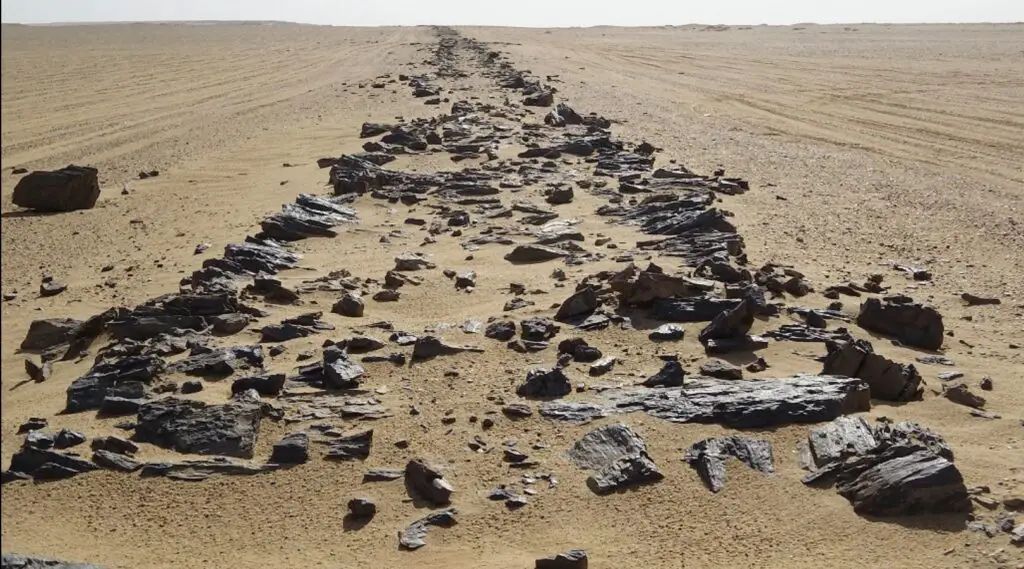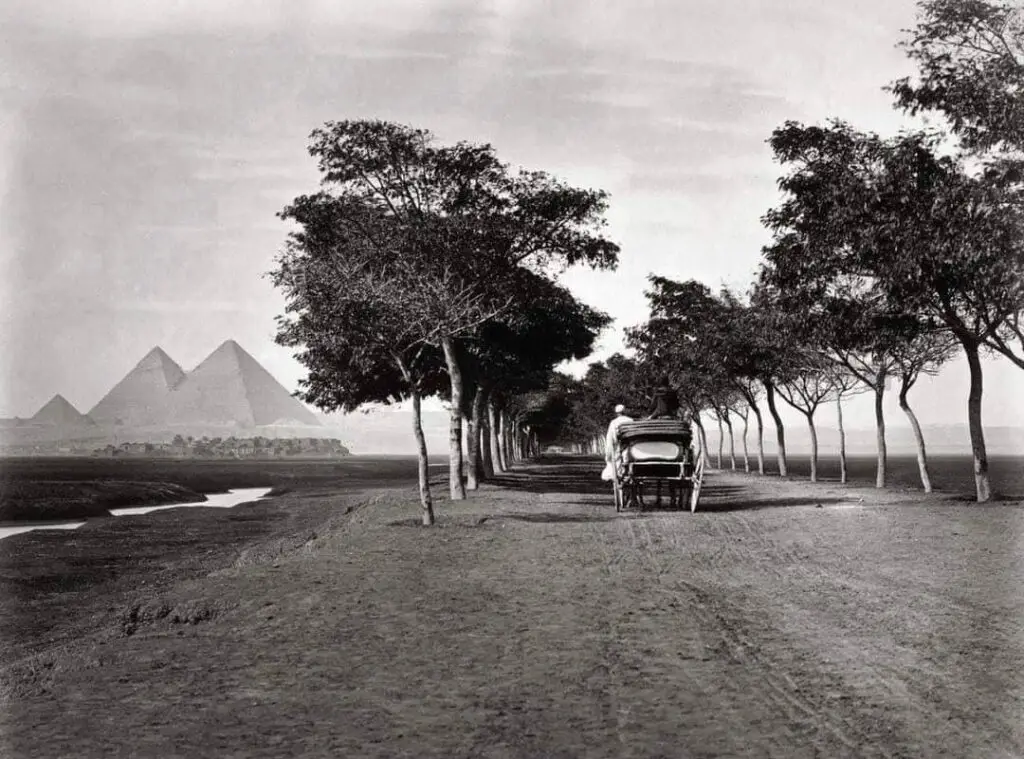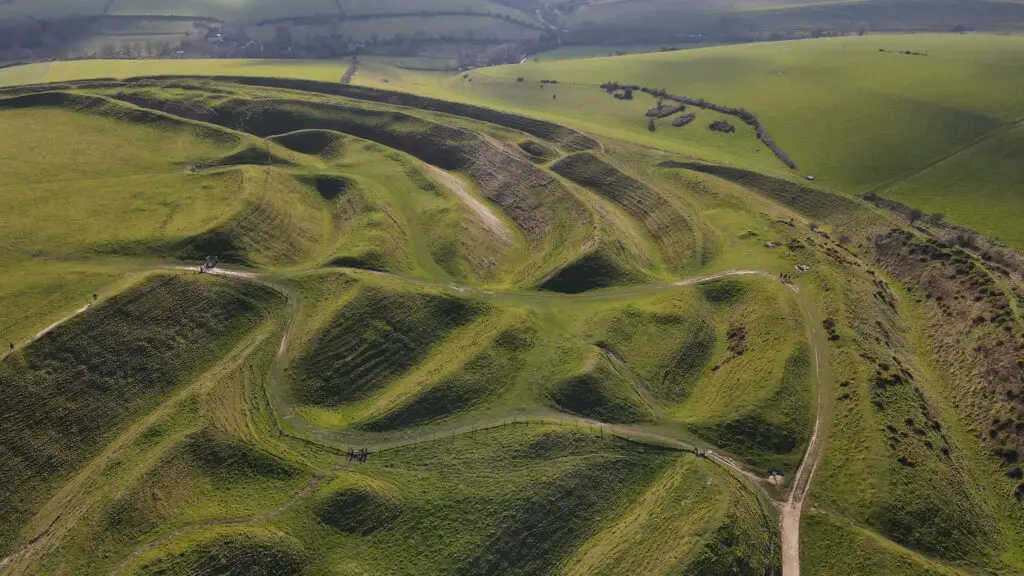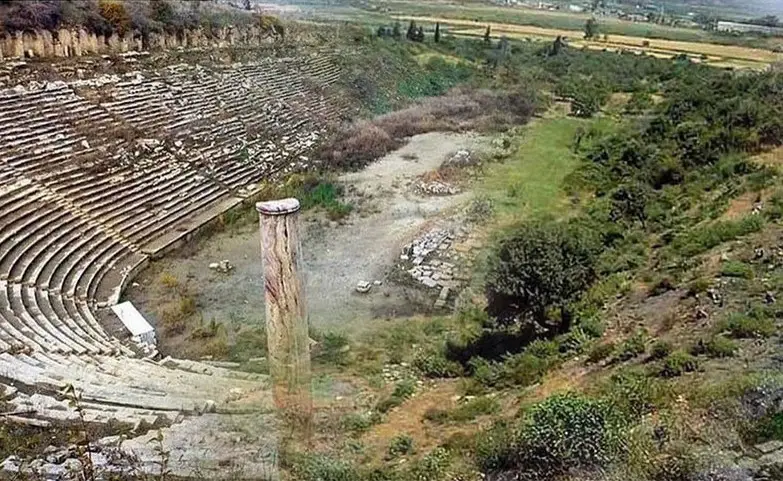Giza Road: The ancient Egyptians created many wondrous things, not least of which were the pyramids.
Even today archaeologists and historians debate precisely how they were built. These experts do agree that their construction took years, and were likely built by crews of slaves who worked constantly to see them completed.
And that work meant that countless stones had to be moved from two quarries near Lake Moeris to the construction site.
Content
To accomplish that, Egyptian transportation experts designed the first paved road in existence, a seven-and-a-half mile stretch located on the western bank of the Nile, known as Giza Road. Historians say it is 4,600 years old, and in places is about six and a half feet wide.

Giza Road
It was the first, and only, paved road in ancient Egypt, and was discovered by archaeologists in 1994. Tourists visiting the pyramids can pay a visit to Giza Road, too, but is only that – a tourist stop. It can’t be used by vehicles of any sort; its value lies in what it reveals about ancient Egypt.
Back then, goods were moved either on foot or by ships on the Nile. Roads were considered less important to industry, which favoured a system of canals, largely because vehicles of any type, even chariots, were not common until much later.
Even the massively heavy basalt stones were transported by ship, not just for construction of the pyramids and temples, but also for export to other locations.

In fact, in a certain sense Giza Road is a complete anomaly in ancient Egyptian life, as the Nile was, for all intents and purposes, the country’s highway. This river and connecting canals and lakes brought industry together, and allowed merchants to ship goods anywhere in the country and beyond its borders to neighbouring nations.
Egyptologists
According to historians and Egyptologists, it was only much later, beginning at the start of the 19th century, that transportation across land was more common.
While Giza Road is the oldest paved road in the world, other nations have ancient roads too, some of which are considerably longer.
The Nakasendo Highway in Japan, for example, is about 310 miles, running along the shores of Lake Biwa. It was built in the 17th century, connecting the cities of Kyoto and Eto, which today is called Tokyo.
The Silk Road is another ancient thoroughfare that was once the chief trading road between the Roman Empire’s capital city (Rome) and the cities of the Han Dynasty in China. It was built, historians say, around 200 B.C., and sections of it still exist, primarily connecting Pakistan with Xinjiang, China.
England

In the U.K., a road connecting the trading merchants of the Dorset coast in western England with merchants in East Anglia, still exists, albeit in a different form. It’s called the Ridgeway, and this road today is a 95 mile long trail.
It was used for thousands of years as a trading route within the U.K. Historians say it was cited in documents going all the way back to the 10th century, making it the oldest road anywhere in the United Kingdom.
Old North Trail
Even North America once had an ancient trail, from Canada in the north down to central Mexico. Historians say that it took Indigenous people four years to travel from the northern most point of the Old North Trail, as it is called today, to Mexico, to trade their goods with neighbours to the south.
If you like this article, then please follow us on Facebook and Instagram
Another Article From Us: Roman Road Beneath McDonald’s Restaurant
All of these roads were considerably longer than Giza Road. But the ancient Egyptian road, though it’s not even eight miles long, is in some respects the most stunning.
It symbolizes what would become significant advances in transportation design and construction, roads that would soon accommodate carts, wagons and – eventually – vehicles of every description.





